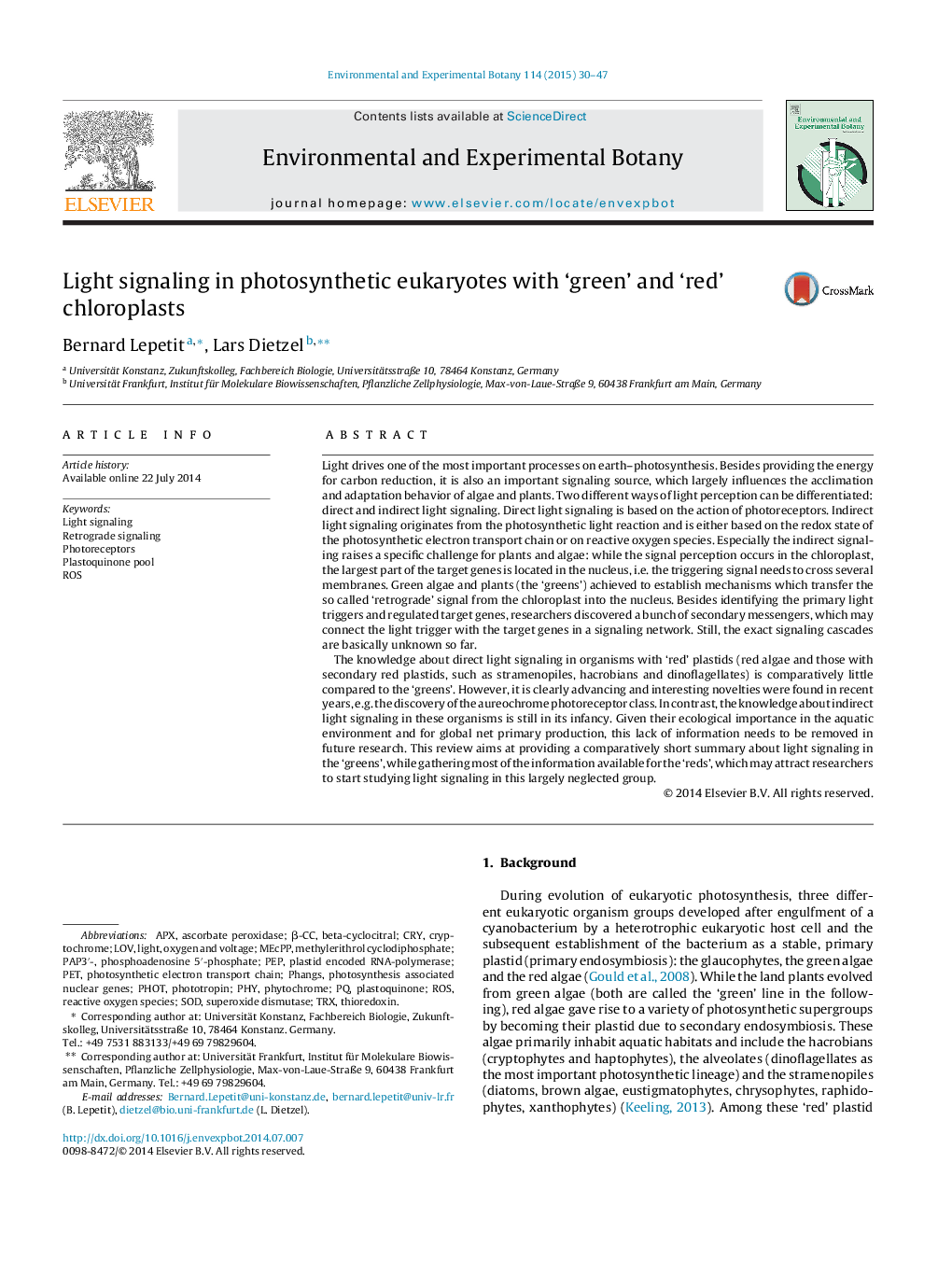| Article ID | Journal | Published Year | Pages | File Type |
|---|---|---|---|---|
| 4554272 | Environmental and Experimental Botany | 2015 | 18 Pages |
Light drives one of the most important processes on earth–photosynthesis. Besides providing the energy for carbon reduction, it is also an important signaling source, which largely influences the acclimation and adaptation behavior of algae and plants. Two different ways of light perception can be differentiated: direct and indirect light signaling. Direct light signaling is based on the action of photoreceptors. Indirect light signaling originates from the photosynthetic light reaction and is either based on the redox state of the photosynthetic electron transport chain or on reactive oxygen species. Especially the indirect signaling raises a specific challenge for plants and algae: while the signal perception occurs in the chloroplast, the largest part of the target genes is located in the nucleus, i.e. the triggering signal needs to cross several membranes. Green algae and plants (the ‘greens’) achieved to establish mechanisms which transfer the so called ‘retrograde’ signal from the chloroplast into the nucleus. Besides identifying the primary light triggers and regulated target genes, researchers discovered a bunch of secondary messengers, which may connect the light trigger with the target genes in a signaling network. Still, the exact signaling cascades are basically unknown so far.The knowledge about direct light signaling in organisms with ‘red’ plastids (red algae and those with secondary red plastids, such as stramenopiles, hacrobians and dinoflagellates) is comparatively little compared to the ‘greens’. However, it is clearly advancing and interesting novelties were found in recent years, e.g. the discovery of the aureochrome photoreceptor class. In contrast, the knowledge about indirect light signaling in these organisms is still in its infancy. Given their ecological importance in the aquatic environment and for global net primary production, this lack of information needs to be removed in future research. This review aims at providing a comparatively short summary about light signaling in the ‘greens’, while gathering most of the information available for the ‘reds’, which may attract researchers to start studying light signaling in this largely neglected group.
